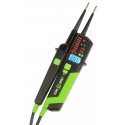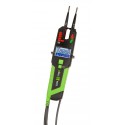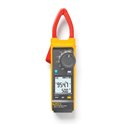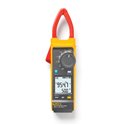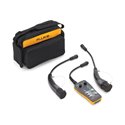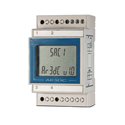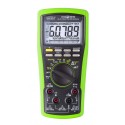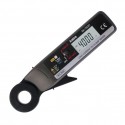- Marián Hubinský
- Technologies
- 3378 views
- Tags: EVSE, PWM, Automotive, Charging
Electric mobility is becoming widespread and is penetrating into all areas of transport. There are more charging stations outside and wallboxes in garages. There are several steps in between connecting the charging cable and the end of vehicle charging, let's have a look at them from the perspective of electronics and simulation of EVSE testers for electrical revision.

In Europe, connectors Type 2 (Type 2 Mennekes / IEC62196-2) for charging with alternating current and CCS Combo 2 (IEC62196-3) for charging with direct current have gained dominance for charging electric vehicles. Connector Type 3 (Scame) promoted in France and Italy are marked as not approved at the EU level. For instance, Tesla uses the Type 2 connector to supply direct current through the phase terminals. The positive pole is on L3 and the negative on L2, the connectors can be doubled on +(N and L3) and +(L1 and L2). The Japanese CHAdeMO standard, even with the proposed Chaoji, remains used only in its home country. China introduced its GB/T connector similar to Type 2, North America uses Type 1 and CCS 1 as standard.
The Type 2 connector for AC charging has 7 contacts (3φ connection or 5 contacts for 1φ). On the cable side (from the charging station) there is a male with sockets, while on the vehicle side there is a female with pins that have a plastic cap as protection against contact.
The terminals are labeled PE, N, L1, L2, L3, PP, and CP. The last two are mainly used in communication and charging management. In the basic state, the only active outlet is CP.
The CCS Combo 2 connector found on DC stations is an extension of the AC standard and uses the same terminals for control, while charging takes place via two reinforced terminals added to the extension on the bottom of the plug.
CP - Control pilot is shorter so that it is disconnected first, which ensures a safe shutdown of the voltage on L1, L2 and L3 or on + and - during DC charging. This outlet is used to control charging. This connection is used by the charging station to transmit its capabilities, and the vehicle, on the other hand, its requirements. Connection is powered from the charging station, usually (during standby) +12 V DC through 1 kΩ.
PP - Proximity Pilot (plug present) is used to indicate cable connection, indication of the current carrying capacity of wires and locking of connectors. The power comes from the vehicle side (+5 V through 330 Ω) and the vehicle, among other things, uses it to announce the request to unlock charging cable, which gives the station time to turn off the voltage in a controlled manner before disconnecting the circuit.
The voltage on CP and PP terminals is relative to PE, all other wires are disconnected except for charging connectors.
What happens after we connect charging cable to EV?
After connecting the charging connector to the vehicle, the voltage at the CP output will drop from 12 to 9 V, because the vehicle has a diode at the input followed by a 2.74 kΩ resistor to ground. The station detects this and responds with a 1 kHz and alternating (PWM) signal.
Similarly, the vehicle detects connection of charging cable and charging station via PP signal (the PP ground station via a pair of 150 and 330 Ω resistors connected in series). At this moment, the vehicle disables its drivetrain and motors to prevent the cable from being pulled out. The station confirms locking by shorting the 330 Ω resistor on its side.
This is followed by the inclusion of another resistor in the CP circuit on the vehicle side, which signals the request to start charging. According to the value of the resistor and the voltage, the station determines whether ventilation is required (charging outside). If all conditions are met, your EV will start charging.
Since both control signals are measured against PE, the disconnection of this protective conductor is easily recognizable. Communication is analog and is relatively simple to implement and resistant to signal interferences and errors.
The relevant standards describe several states that may occur while charging electric vehicles according to the state of the vehicle and the state of the charging station.
| Changing status accorging SAE J1722 / IEC 61851 | |||
|---|---|---|---|
| Status | voltage on CP (V) |
resistance CP to PE (Ω) |
|
| A | vehicle disconnected | 12 V | ∞ Ω |
| B | vehicle ready | +9/-12; 1 kHz | 2740 Ω |
| C | charging | +6/-12; 1 kHz | 882 Ω |
| D | charging, ventilation required | +3/-12; 1 kHz | 246 Ω |
| E | Off | 0 V | |
| F | Fault | -12 V | |
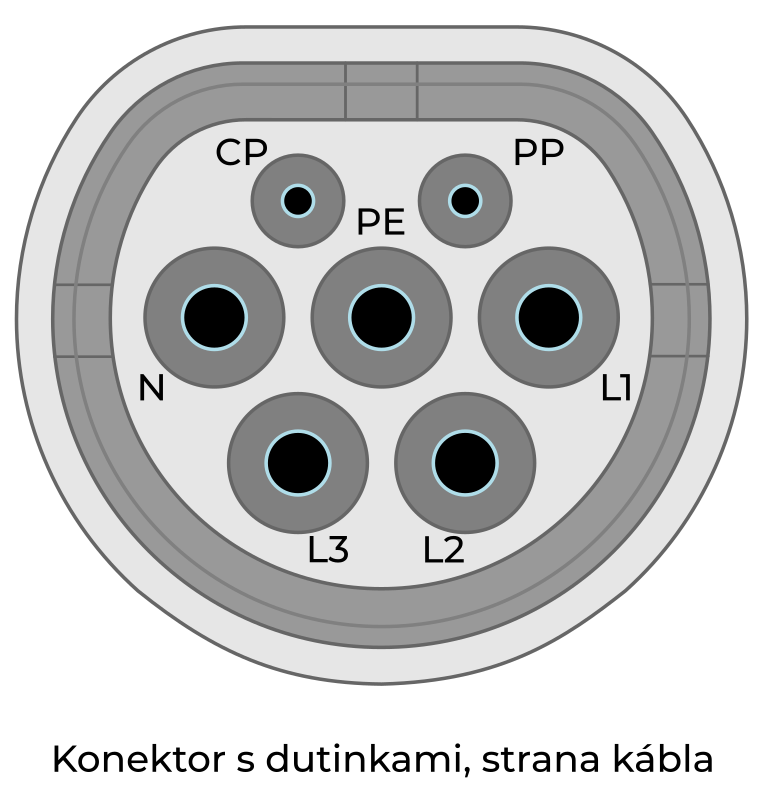
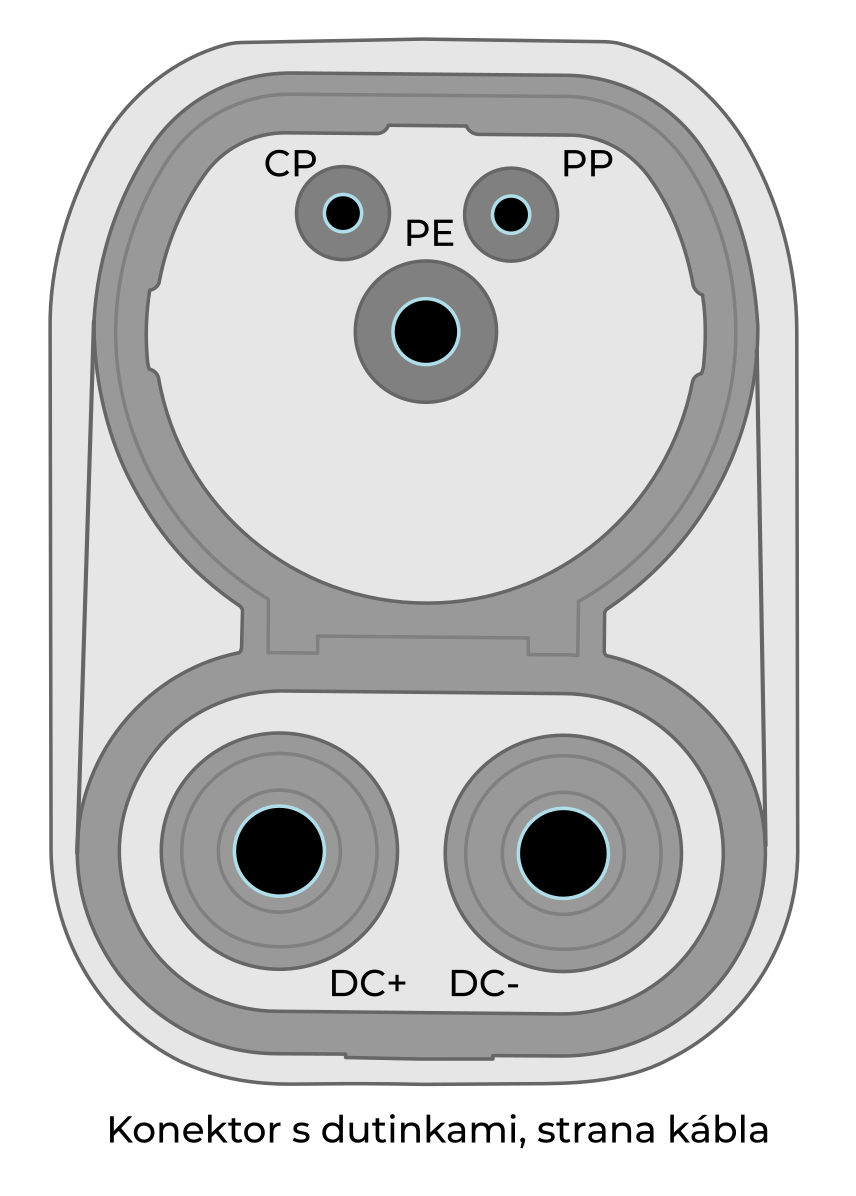

The charging station announces the maximum current it is capable to deliver using the PWM signal cycle.
Following formulas are used to calculate PWM cycle values:
- range 6 ... 51 A
cycle = current / 0,6 - range 50 .. 80 A
cycle = (current / 2.5) + 64
The possibilities of communication via a 1 kHz signal appear to be insufficient, therefore according to ISO 15118 / DIN 70121 a new signal in the 20 MHz wide band called PLC is introduced as an extension of the original IEC 61851. The RF signal of OFDM modulation is superimposed on the CP output and for old devices it is "invisible" even if they connect to the new infrastructure. This maintains backward compatibility.
| Duty cycle on Control Pilot pin and maximal current | |
|---|---|
| Duty Cycle (PWM) | current |
| < 3.00 % | Charging is not allowed |
| 3 - 7 % | use ISO 15118 |
| 7- 8 % | Charging is not allowed |
| 10.00 % | 6 A |
| 13.34 % | 8 A |
| 16.67 % | 10 A |
| 21.67 % | 13 A |
| 26.67 % | 16 A |
| 33.33 % | 20 A |
| 40.00 % | 24 A |
| 50.00 % | 30 A |
| 53.33 % | 32 A |
| 80.00 % | 48 A |
| 89.20 % | 63 A |
| 96.00 % | 80 A |
Overcurrent protection
In order to not to exceed the maximum current of the charging cable at charging stations that have a socket and the customer uses his own cable, the charging cables have a resistor inserted between the PE (earth) and PP (Proximity Pilot) contacts. The resistor values according to IEC 62196 are described in the following table. With DC charging, the situation is more complicated and the values in the table may not always apply.
| Maximal cable current and resistor value in Proximity Pilot | |
|---|---|
| cable current | resistor PP-PE |
| 13 A AC | 1500 Ω |
| 20 A AC | 680 Ω |
| 32 A AC | 220 Ω |
| 63 A AC | 100 Ω |
| < 200 A DC | 1000 Ω |
| > 200 A DC | 1500 Ω |
Charging mode
The IEC 61851-1 standard defines 4 charging methods according to the connection of the vehicle to the charging network and current conversion.
IEC/ISO 61851 Mode
- Vehicle directly connected to the power network
- max. 16 A, 1φ 250 V, 3φ 480 V
- Mostly electric bicycles and scooters
- AC»DC conversion done by built in vehicle electronics
- no additional protection via trip switch
- vehicle connected to power network via external charger
- max. 32 A, 1φ 250 V, 3φ 480 V
- portable chargers (box and a wire) IC-CPD
- slow AC charging
- AC»DC conversion in vehlicle (on-board charger)
- overcurrent and overvoltage protection done by charger
- charger communicates via CP signals
- IEC 62196-2 connector on the vehicle side
- vehicle charged by a charging station
- max. 32 A, 1φ 250 V, 3φ 480 V
- firmly connected cable to the charging station or dedicated cable between the vehicle and charging station socket
- both slow and fast AC charging
- AC»DC conversion in the vehicle (on-board charger)
- surge, overcurrent and overvoltage protection done by the charging station
- the charging station communicates via CP and PP signals
- connector in accordance with IEC 62196-2 at the vehicle side
- vehicle connected to DC charging station
- max. 1000 V, 400 A DC
- IEC 62196-3 connector at the vehicle side
- fast DC charging
- current and voltage needed by the battery is provided by the station using VCCF control
- charging station does the AC»DC coversion
- charging cable firmly connected to the charging station, sometimes with active cooling
- surge, overcurrent and overvoltage protection done by the charging station
- charging station communicates with the vehicle via CP and PP signals, ISO 15118 in some cases
- energy flow possible in both directions
Megawatt Charging System
Charging heavy vehicles, such as trucks, requires more power, therefore a new MCS (Megawatt Charging System) standard was designed with a voltage of up to 1250 V DC and a current of up to 3 kA. This standard introduces a new connector with 7 outputs (2 DC, PE, CP, PP and 2 communication) and the possibility of active cooling of the wires. Standardization is covered by IEC 63379 / J3271, communication takes place according to ISO 15118. The design supports two-way energy flow, the vehicle can serve as an energy store for another device, building, network (Vehicle-to-grid - V2G) or another vehicle (Vehicle-to-vehicle - V2V) ). standardization is covered by the CharIN association.
Currently, there are three current levels considered at a voltage of 1250 V DC:
Level 1: +350A ... 437 kW
Level 2: +1000A ... 1.25 MW
Level 3: 3000A ... 3.75 MW
Charging a 100 kWh battery would take 14 minutes at Level 1, 5 minutes at Level 2 and less than two minutes at Level 3.
With this type of charging, the support of means other than vehicles is also considered. For example, the company Lilium, which develops electric flying vehicles for the transportation of people, announced that it will use the MCS connector on its aircraft - a VTOL taxi.
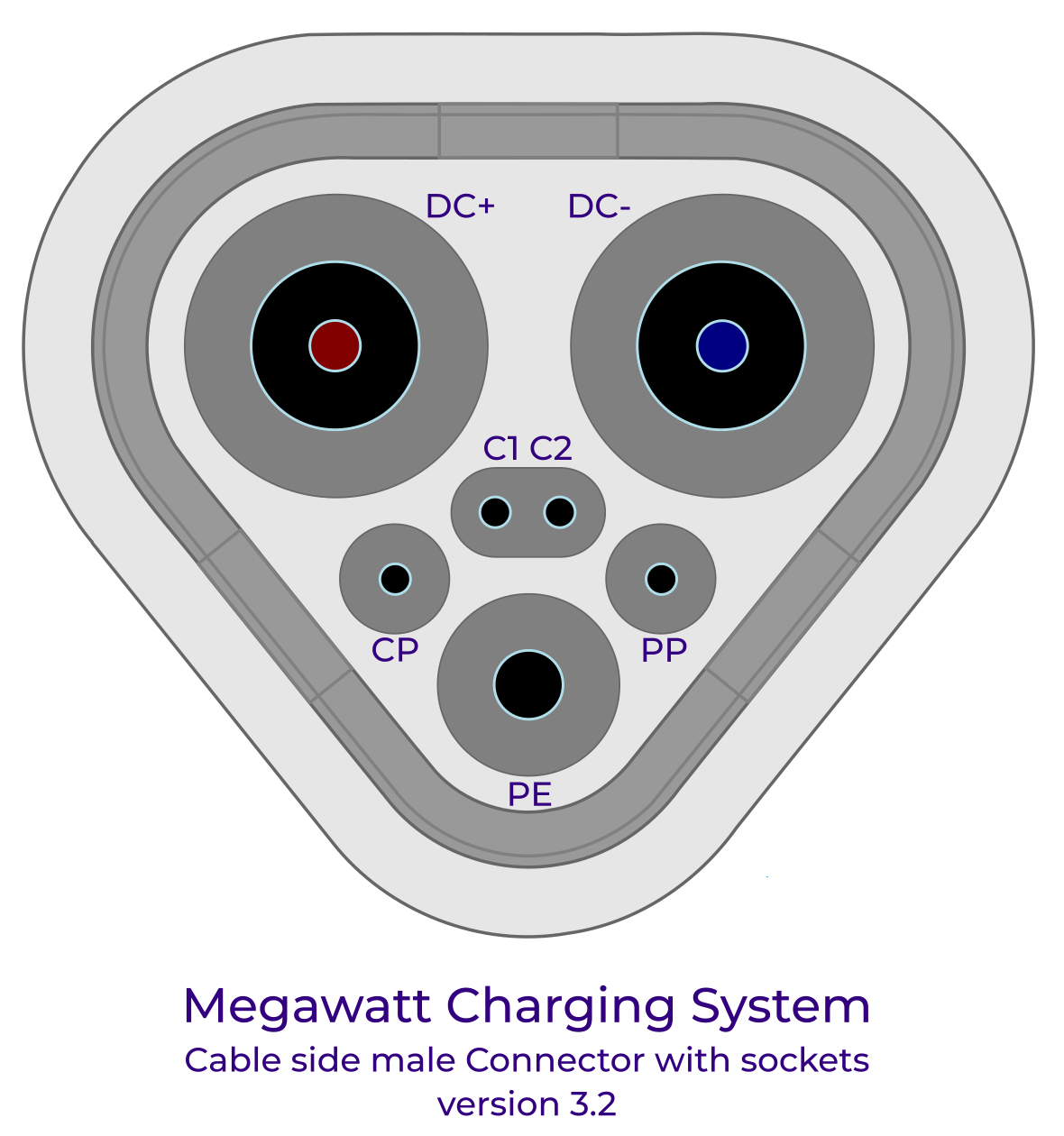
Connection schematics
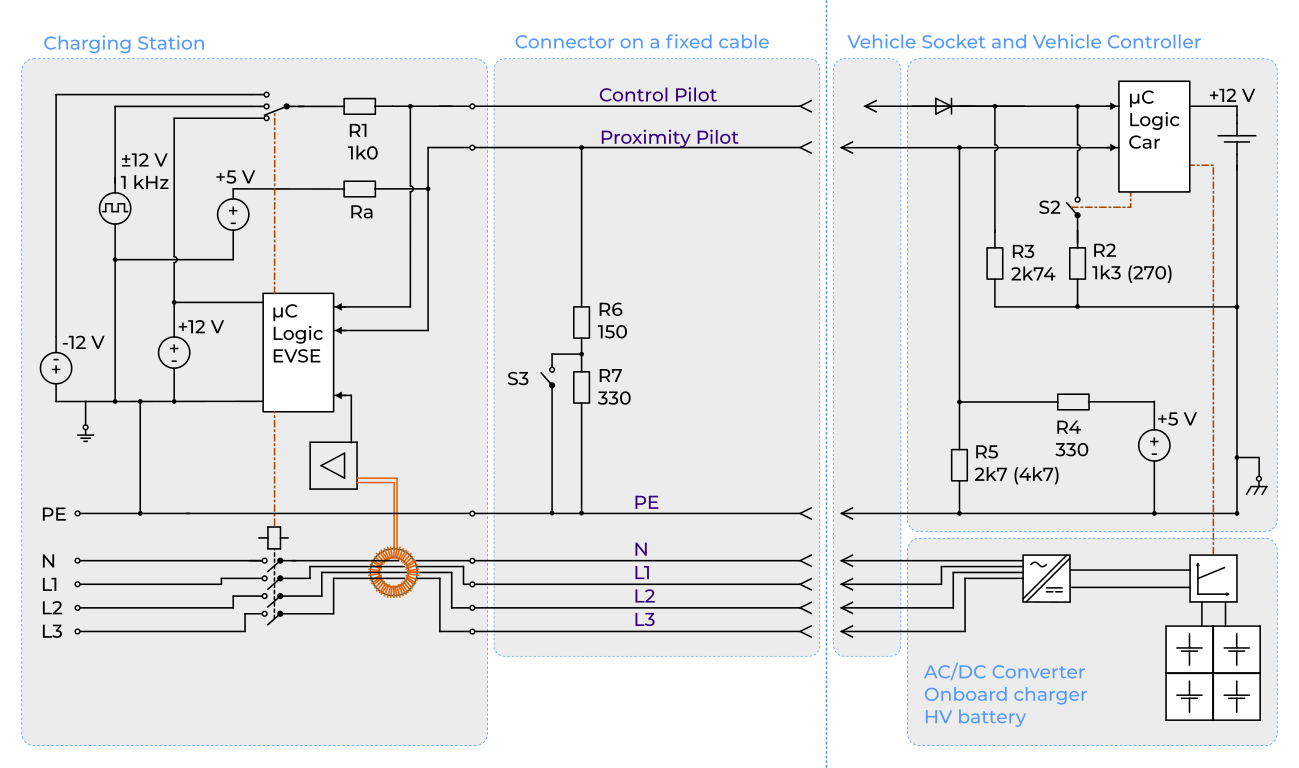
Schematics of communication between a charging station and vehicle (CE/IEC 61851.1)
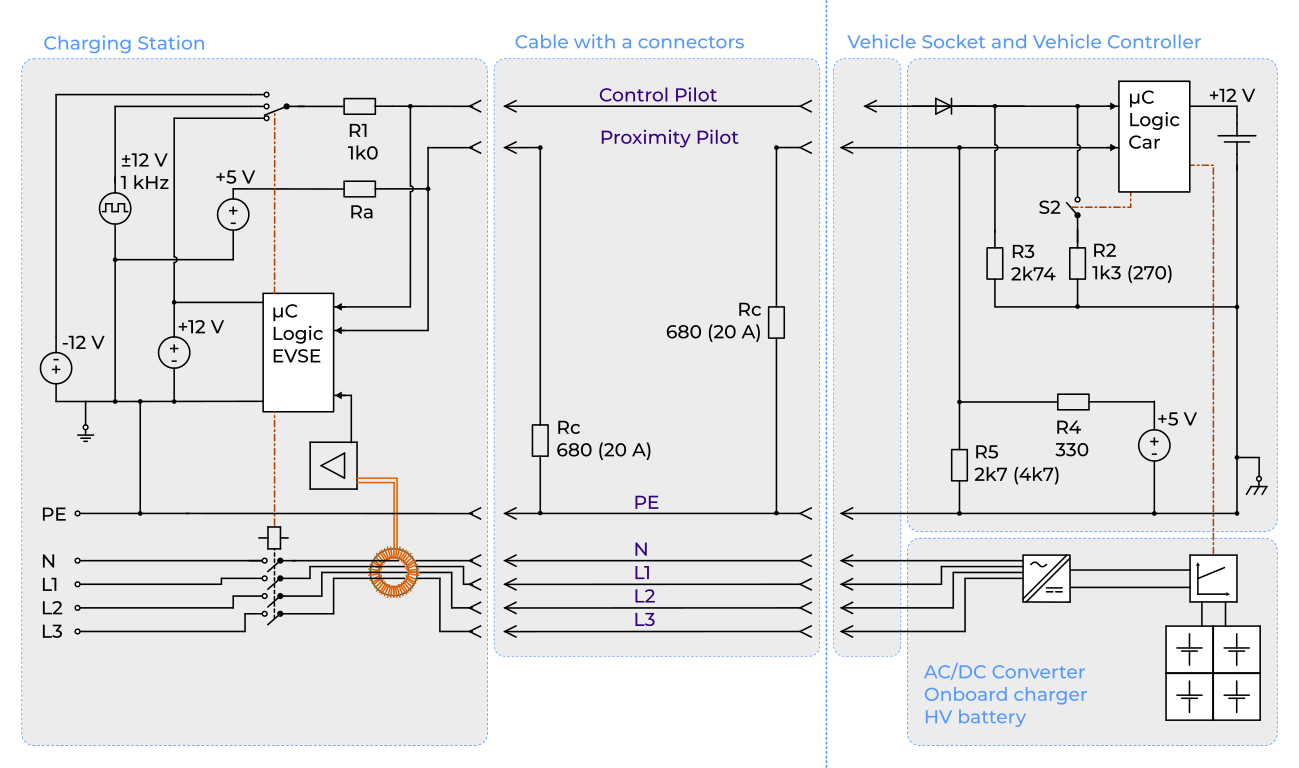
Communication diagram of an AC charging station with a car according to CE/IEC 61851.1 - a station with a socket and a cable with connectors on both ends.
Abbreviations
- EV: Electric Vehicle
- EVSE: Electric Vehicle Supply Equipment
- IC-CPD: In Cable Control and Protection Device
- ICCB: In Cable Control box
- MCS: Megawatt Charging System
- OFDM: Orthogonal Frequency-Division Multiplexing
- PHEV: Plug-In Hybrid Vehicle
- PLC: Power Line Communication
- PWM: Pulse Width Modulation
- SLAC: Signal Level Attenuation Characterization
- VCCF: Vehicle Charging Control Function
- V2G: Vehicle to Grid
- V2H: Vehicle to Home
- V2L: Vehicle to Load
- V2V: Vehicle to Vehicle
Tools and instruments - E-mobility
Fluke 393 FC - CAT III 1500 V...
Fluke FEV300/TY1-TY2 - test adapter...
Fluke FEV300/TY2 - test adapter for...
Author
Marián Hubinský
Elso Philips Service s.r.o.
Jilemnického 2
91101 Trenčín
marian.hubinsky@elso.sk


